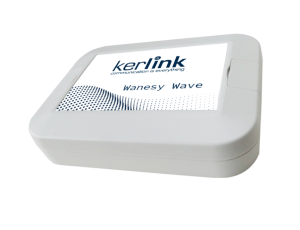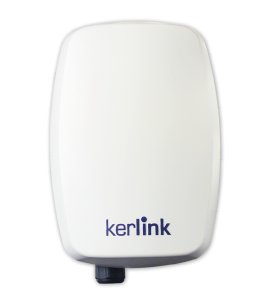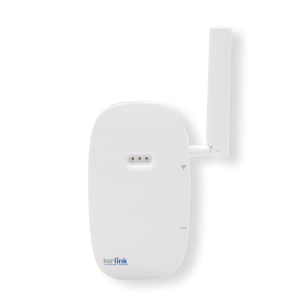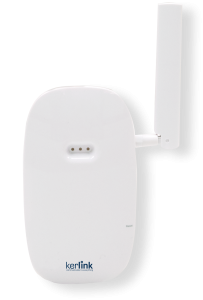Building & Real Estate
Occupants Wellbeing, Energy Efficiency and Assets Protection Are Driving IoT Adoption
Occupancy Monitoring

Efficient space allocation and usage is a real challenge for facilities managers to face increasing and evolving user demands, especially when confronted with new way of working. They have to cope with companies’ evolution and tenants’ expectations like supporting enterprise departments consolidation or reorganization, meeting needs for more or less space due to growth, mergers or lay-offs and abiding by leasing agreements conditions. Building managers and facilities managers are constantly under pressure to maximize space utilization so as to ensure maximum productivity, minimum costs and optimized working conditions for workers. Usual methods like paper schedules on the door, visual check or occupancy estimates – when not a simple guess (let’s try!) – are, at the end, counterproductive since they generate approximations, double-booking, waste of time, waste of productivity and finally users’ frustration. Efficient resource allocation and planning can benefit from real-time offices, desks, meeting rooms, open spaces and coffee break areas dynamic occupancy monitoring to track usage and attendance. Occupancy management can also help to improve tenants’ and workers’ working comfort by monitoring people presence, space occupancy density and the number of people in each area to adapt ambient working conditions. Occupancy management can also be fully integrated in Building Management Systems (BMS), Building Automation Systems (BAS) and meeting rooms booking tools. It offers facilities managers a consolidated vision of building spaces occupancy and availability, at any time, as well as statistics on usage patterns and peaks hours to adapt their services. Covid-19 pandemic made businesses and administrations realize that people are they greatest but also most vulnerable asset and space occupancy management can be a powerful tool to protect them by enabling healthy, secure and comfortable working environment to ensure serenity and, thus, productivity.
Occupancy IoT sensors and devices can help detect presence and collect information about space utilization. Space occupancy detection can be achieved by various means like IoT devices equipped with motion detection technology that can detect human presence. Other discrete battery-power IoT infrared sensors are processing thermal signal in the monitored working space and detect the human body’s heat when someone enters the room. These passive IoT infrared sensors can also be used to monitor desk or office occupancy. Bluetooth Low Energy (BLE) battery-powered IoT sensors can, on their side, detect smartphone presence and help to identify that somebody is in the room, assuming that your smartphone does not leave your pocket. And ultrasonic sensors can use high-frequency sound waves to scan the room and detect presence if they identify continuous disruptions of the reflected patterns they have initially registered in the empty space. All these IoT sensors and devices can be easily deployed and maintained. As they can detect presence, they can not only be used for occupancy monitoring, but they can also be a powerful tool to detect intrusions, outside working hours.
Leveraging Kerlink industrial-grade IoT connectivity, powered by LoRaWAN technology, can efficiently assist facilities managers to quickly, easily and cost-efficiently deploy, connect and manage IoT sensors for room occupancy monitoring. Having real-time information about space utilization and occupancy can help building managers to understand the precise requirements of tenants and companies so as to deliver efficient resource allocation, share space availability in real-time and optimize services based on daily usage patterns, needs and peak hours. Connecting room occupancy sensors to an industrial-grade private IoT network, with performant indoor coverage, can help to track unused spaces or to reduce overcrowded areas. Real-time room occupancy management, using LoRaWAN technology, can help reduce administration time and operating costs, improve space allocation flexibility and offer smarter booking options, while optimizing tenants and workers comfort and productivity.
Air Quality & Ambiance Monitoring

A study[1] published in 2018 by the US Environmental Protection Agency (EPA) highlighted that indoor air is 100 times more contaminated than outside air and that modern populations spend 80% to 90% of their time indoors, making indoor air more impactful on human health than outdoor air. In addition, this study demonstrated that, contrary to atmospheric pollution, indoor pollutants are about 1,000 times more likely to be inhaled and thus transmitted to the lungs, causing diseases like Sick Building Syndrome (SBS), various chemical sensitivities and dizziness. Another UK study, realized in late 2018 for the British Council for Offices (BSO), explained that task performance, based on concentration and attention, is directly affected by indoor environmental conditions such as temperature, relative humidity, and CO2 concentration. This study demonstrated that a granular control of temperatures and a proper monitoring of CO2 level can directly reduce the level of stress of workforce, customers, visitors and tenants, and improve their productivity and satisfaction levels.
The COVID-19 pandemics also revealed the central role played by air quality management in buildings as one of the key factors in the fight against the spread of the virus. Every major health organization clearly stated the importance of improving heating, ventilation and air conditioning (HVAC) systems use to limit virus transmission by improving air quality, adapting temperature and humidity and limiting CO2 concentration (dry air and high CO2 levels are increasing the risk of the virus airborne transmission). EPA thus stated that the layout and design of a building, as well as occupancy density and type of HVAC system can all impact potential airborne spread of the virus and that, despite ventilation and air cleaning cannot, on their own, eliminate the risk of airborne transmission of CVOD-19 virus, the increase of ventilation with outdoor air and air filtration are both important components of a larger strategy[2]. The Worlds Health Organization (WHO) on its side, said that building ventilation is an important factor in preventing the virus that causes COVID-19 from spreading indoors[3]. And the European Centre for Disease Prevention and Control (ECDC) identifies engineering controls in mechanically ventilated (by HVAC) and naturally ventilated closed spaces as one of the four bundles of non-pharmaceutical interventions (NPIs) to reduce potential airborne transmission of SARS-CoV-2 in closed spaces[4]. Proactive precautionary measures like efficient and effective indoor air quality monitoring and control are well-established complementary solutions to fight airborne transmission of SARS-CoV-2 in buildings, offices, universities, schools, hospitals, malls, entertainment structures and any other place gathering people in confined spaces.
IoT sensors and devices can deliver immediate contribution to deploy an efficient air monitoring. IoT sensors can analyze air quality, CO2 concentration, humidity level and temperature in real-time, raise alerts if predefined thresholds are reached and send this information to a centralized Building Management Systems (BMS) or Building Automation Systems (BAS) to quickly adapt HVAC settings. In a simpler way, IoT sensors can raise alerts on basic information like C02 concentration or air quality and inform workers, students or users to open the windows for outdoor fresh air ventilation. Beyond air quality, IoT sensors can also enable the monitoring of important factors that have a direct impact on working conditions and workers productivity. The is the case for illumination and lighting. Light sensors can detect natural light, motion or presence and dim or turn off lights during the day or when nobody is in the room. Such IoT sensors can be deployed in meetings spaces, corridors, stairs and around the building to ensure the appropriate lighting when needed, improving working conditions and reducing energy consumption and electricity costs. Heating and cooling IoT sensors can also be used to monitor HVAC efficiency and settings. Beyond air quality, working conditions and energy consumption can directly be affected by inefficient heating and cooling systems, and sensors can help monitor performances, identify the possibilities for better insulation or abnormal situations. Noise monitoring sensors can also be used to monitor real-time noise is specific areas – IT server rooms, workshops, open spaces – or to detect specific emergency situations (gun shot or explosion detection).
Leveraging Kerlink industrial-grade IoT connectivity, powered by LoRaWAN technology, can efficiently assist facilities managers and tenants to cost-efficiently, quickly and easily deploy, connect and manage IoT sensors for air quality and ambience monitoring. Indoor air quality is a fundamental component for workers health, productivity and comfort. Connecting air quality IoT sensors and other ambiance monitoring IoT devices to an industrial-grade private IoT network, with robust indoor coverage, can help to enhance microclimate conditions inside buildings, fight the spread of diseases and viruses and achieve better working condition for occupants. Using IoT for air quality monitoring and indoor ambiance management also avoid overspending on heating, lighting and air conditioning and help facilities managers and tenants to move to greener, more sustainable, facility management practices. This move will bring immediate benefits for users’ experience, for energy consumption reduction and for better environmental governance
[1] United States Environmental Protection Agency, Managing air quality – air pollutant types, October 2018,
[4] https://www.ecdc.europa.eu
Energy Management

For facilities managers and tenants, one of the biggest and permanent challenge is to reduce overall energy consumption and to improve the bottom line. In Europe, buildings are the single largest energy consumer and are responsible for approximately 40% of EU energy consumption and 36% of the greenhouse gas emissions. 75% of the EU building stock is considered as energy inefficient and renovation of existing buildings could reduce the EU’s total energy consumption by 5-6 percent and lower CO2 emissions by about 5%[1]. In the US, according to the US Energy Information Administration[2], almost 40% of the energy consumed powers commercial and residential buildings. Globally, EY estimates that commercial buildings assets account for 30% to 40% of energy consumption worldwide and that this level should reach 50% by 2030[3]. Reducing energy consumption is also an increasing stake to comply with more and more demanding government initiatives. And, as it can also be a key differentiator to attract tenants, increase premium and reduce vacancy rates, facilities managers also have to improve the way they are managing their assets and look for better regulation-based certifications (like BREEAM, LEED or HQE). A 2014 study from the United Nations Environment Program stated that LEED-certified and Energy Star-rated buildings versus nonrated buildings had 8% higher effective rents (a function of both rent amount and occupancy rate) and a 13% sales price premium[4]. If building automation solutions have been existing for years, their cost and complexity made them traditionally difficult to implement for many commercial, public, institutional, educational or healthcare facilities and buildings. The Internet of Things (IoT) and more affordable applications are now available to drive costs down, to bring the requested capabilities and to really change the market dynamics for facility management.
Not only are IoT connected meters and index readers able to collect real-time energy consumption (Automatic Meter Reading, aka AMR), but IoT sensors are also able to track each individual equipment energy use and to capture key environmental information (like temperature, humidity and occupancy) to enrich the flow of data provided to building managers for relevant decision-making. Once these data are crunched and analyzed, equipment operations can be automatically controlled and their settings modified based on tenants’ and occupants’ requirements or on working hours. Unnecessary heating, cooling and lighting can thus be avoided and adjusted in public areas, corridors, meeting and conference rooms, classrooms or parking and equipment like HVAC, heat pumps, lighting, elevators and escalators stopped. Battery-powered and low power consumption IoT sensors can help to extend the reach of Supervisory Control And Data Acquisition (SCADA) systems and to further build a Smart Building Management System (SBMS). IoT can deliver a cost-effective way to reduce the amount of energy wasted in building. It can also unlock a key opportunity to integrate renewable energy, like solar panels, small windmills or elevators regenerative motors, and to build local microgrids to connect all electrical appliances (like HVAC, fire safety, lighting, and security surveillance) to improve energy generation and storage and to minimize the amount of energy loss in transmission. Building energy efficiency can directly benefit from better energy scheduling management, consumption analysis, dynamic demand-response management, energy pricing scalability and cost sharing.
Kerlink industrial-grade IoT solutions, powered by LoRaWAN technology, can bring the performant, robust and reliable in-building IoT connectivity needed to connect smart building energy management IoT sensors. Because they are often located in basements, undergrounds, rooftops or ceilings, or hidden in remote areas, IoT devices and connected equipment require carrier-grade best-in-class LPWA indoor connectivity able to deeply penetrate building materials and to offer strong signal strength, in any type of RF environment. Kerlink IoT indoor gateways and network management tools, designed for public and private IoT networks, bring versatile indoor coverage to power smart data collection for energy management in buildings. It is enabling smart BMS systems to get deep insights into assets performances and energy consumption, as well as key environmental data, in real-time to refine usage patterns and predictive models for facilities managers’ and tenant’s better information and decision-making, based on actionable data. Kerlink low-power, wide-area and deep-indoor IoT connectivity solutions not only help to better run buildings and improve their sustainability and efficiency, but also to reduce energy consumption, with a direct impact on the bottom line.
Water Management

Facing increasing pressure related to climate change and environment protection, facility managers, facilities owners and tenants face growing challenges linked to water conservation, water efficiency and water reuse. Water increasingly becomes a scarce resource and a strategic asset and its management is paramount, even in day-to-day operations and for common needs, especially in buildings with a strong concentration of users. Water is omnipresent in buildings and is used for many things like sanitary, food, maintenance, cleaning, washing, cooling, watering or production tasks. If water is a valuable critical commodity to be used sparingly, it can also have unpredictable and damaging effect in case of leaks, pressure increase or decrease and bad quality. Water leaks can significantly damage building structure, fittings, decoration, wiring, furniture and electronic equipment with increasing humidity and mold. Water distribution and usage management is thus not only key to optimize consumption to cut costs, but also to keep building structures healthy over time. In this purpose, many accessories and equipment can be monitored in smart buildings to achieve both of these objectives: from toiletry water flushing, handwasher faucets, showerheads, to kitchens and food processing, cleaning and laundry facilities or vehicle washing stations in undergrounds, but also boilers and steam systems, HVAC cooling equipment, roof-top tanks to regulate pressure, pumps and pressurized systems, sprinkler systems, or professional equipment like laboratory and healthcare. The sooner water distribution and usage are monitored, the sooner leaks are detected and the more responsive the answer is to avoid catastrophic damages.
IoT sensors and devices can help to monitor distribution networks and water consumption. Connected water meters, as part of an Automated Meter Reading (AMR) system can collect and share water consumption indexes whenever needed, proactively or on-demand. Smart meters can collect volumes consumed, pressure delivered and water flow so as to inform water utilities and facility managers about the supply contract. IoT sensors, equipped with pulse count metering, can also be added to legacy meters so as to quickly enjoy the benefits of IoT smart metering, without the cost and complexity of replacing counters that were usually read manually. Water utilities can improve their services based on the observed patterns of consumption and avoid water wastage by comparing meters indexes at different levels of the building distribution network. Battery-powered IoT sensors are also clever and flexible enough to detect humidity, leaks and water across plumbing system, pipes and valves and raise instant alerts to buildings managers. Leaks are often the result of corrosion or undue water pressure and specific IoT are designed for this purpose. Flood sensors can detect the presence of water in places that are prone to flooding due to the presence of equipment using water or main water pipes: when detecting water on the floor, an alert is sent to inform facility manager. Flow meters can measure flow rates in the network of pipes and instantly detect abnormal deviations in water flow velocity, pressure and vibration, meaning that something changed and that some water is probably escaping. Electromagnetic and ultrasonic IoT sensors can now precisely sense the flow without intrusive installation and trigger alerts in case they observe any change in the nominal flow. Acoustic sensors, on their side, listen to specific noise generated when water seeds through a broken pipe or valve; depending on the size of the leak, the sound emitted might be different – the higher the frequencies, the smaller the leak -. These sensors can be combined with connected meters and valves that will be used to cut off the water supply and allow repairs to be made.
Leveraging Kerlink industrial-grade IoT connectivity, powered by LoRaWAN technology, can help facility managers, to quickly, easily and cost-efficiently deploy and connect smart water metering solutions in buildings. Using indoor LPWA IoT connectivity help facilities owners and tenants to ensure safe and steady water supply, to save money by avoiding unnecessary distribution, to quickly react when leakages are detected, to save time and resources from manual meter reading and to proactively manage water demand-supply, based on usage metrics and patterns. An industrial-grade private IoT network can accelerate and ease the deployment of smart water meters and IoT sensors to constantly get an eye on water management and consumption and improve building environmental footprint.
Security Management

Facilities owners, managers and tenants are constantly looking to improve the security of their buildings to protect their assets and ensure safe working and living conditions. Central Building Management Systems (BMS) and Building Automation Systems (BAS) are used to control and orchestrate a wide variety of building functions and equipment among which security plays an important role. Building security covers a wide range of check points, risks monitoring and response activation. Building individual access points (like doors, windows, entrances, docks, garage gates, etc.) must be permanently monitored and controlled to ensure that they are locked and not left ajar, thus creating a breached point of entry. When a security breach is identified, it must be immediately precisely located and described so as to take appropriate actions and send relevant security personnel, to capture the intruder if necessary. Smoke or water detectors can be used to raise alerts in case of abnormal situation. Entrance counters must permanently record the number of individuals entering and leaving the place to instantly know, at any time, how many people are in the building. Beyond defining attendance patterns, this information is also critical in case of fire, gas leak, emergency evacuation or security threats. Counters can also be used to monitor space utilization, analyze usual tracks patterns and peaks hours and understand behavior of building users. In case of fire, emergency exits and evacuation paths must be clearly signposted and marked to allow quick and safe evacuation, and their operation must be continuously monitored and regularly tested to ensure correct functioning (power supply/autonomy, lighting, regular tests, etc.). Geofencing capabilities can also be used to define security perimeters and the access to restricted areas, or to track and locate valuable assets or expensive equipment to prevent loss of theft.
IoT sensors and devices can be efficiently used to implement and enforce building security and to ensure the requested check points and controls. IoT sensors enable to continuously collect and analyze a regular flow of data from various sources to get real-time central diagnostics on buildings security and protection. By remotely monitoring access points, entrance counters, access rights, smoke or water detection, presence or noise, they can help to monitor all aspects of a building and give real-time on-spot indications of anormal situations. Combined with BMS and BAS systems, they provide valuable data to enrich building management applications to improve security measures and processes to make smarter decisions based on instant security conditions and parameters.
Leveraging Kerlink industrial-grade IoT connectivity, powered by LoRaWAN technology, can help to securely and efficiently connect building security IoT sensors and equipment so as to apply and enforce safety rules, regularly run security audit, anticipate any potentially dangerous situation and ensure the overall protection of buildings, occupants and equipment. An indoor LPWA private IoT network, using secure-by-design carrier-grade IoT gateways and robust network operations and management tools, can help facility managers, real estate owners, tenants and security professionals to harness the power of IoT to secure and protect their assets, refine their security procedures and prevent any type of breach or risk before they occur.
Asset Management & Maintenance

Facility management has been for a long time driven by corrective maintenance: this usually consists in intervening to maintain machinery, lift, escalators, elevators, HVAC or other equipment in building only in case of breakdown, failure or malfunction. Also known as curative or reactive maintenance, this corrective action is still widespread and despite what appears at first glance to be a fairly simple management method, this approach is in fact very counterproductive: it can generate frequent, unplanned, sometimes costly and often long stoppage or equipment unavailability. Not to mention the frustration of tenants or the exasperation of users or visitors. A first improvement step has been achieved with preventive maintenance, where machinery and equipment are visited and maintained on a fixed schedule and a planned set of controls, hoping that nothing goes wrong between visits and not really cutting maintenance costs for some visits that, in the end, are not really necessary. This routine maintenance approach, still widely practiced, is sometimes difficult to balance: maintenance is planned according to the manufacturer’s generic recommendations and is not adapted to local usage conditions. Now comes predictive maintenance that brings the monitoring and analysis of the equipment and the prediction of required maintenance depending on the usage pattern and cycles, its anticipated ageing and the status of each piece. The goal is to plan interventions in advance, only when necessary but before any failure occurs, to avoid sudden service stoppage and equipment breakdown. Constantly checking the health of the asset and predicting necessary corrective measures is the future of smart maintenance.
IoT sensors and devices can help to continuously collect data directly from equipment actuators, motors and drives to monitor how they operate and quickly identify any change that might characterize a next breakdown. Having a consistent and regular flow of raw data is key to produce usage patterns, understand equipment normal performances and set thresholds to identify any deviation. IoT sensors and devices also help to get data stream from machines and equipment that are difficult to access in building basements, undergrounds or rooftops or installed on all floors. They enable real-time data capture and transmission, using IoT networks, to avoid manual reading, visit planning and human errors. Once collected and gathered, data are sent to the cloud to be filtered, crunched and stored in data lakes to fuel predictive maintenance applications, delivering actionable information for appropriate operations to extend equipment lifetime and ensure maximum uptime.
Leveraging Kerlink industrial-grade IoT connectivity, powered by LoRaWAN technology, can help to quickly and simply connect building equipment and machinery to prevent downtime and avoid service disruption. Connecting IoT sensors to a private IoT Network for asset management helps to improve predictive maintenance efficiency and quality, to optimize spare parts management and to reduce overall maintenance costs, while increasing equipment lifetime and service uptime.
Cleanliness & Operations
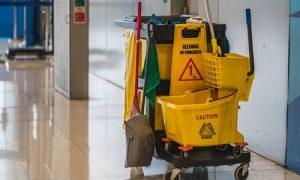
The cleanliness and disinfection of common areas is an essential factor of well-being in the use of public spaces, but even more so in the fight against the spread of diseases and viruses, especially in the event of a pandemic. Factories, public buildings, office buildings, schools, universities, entertainment places or hospitals need to have clean and safe restrooms and commons waiting, circulation, resting or eating areas and to lower infection hazards. Although some devices can be connected to provide real-time information on their operation – fullness and usage – (soap, gel, toilet paper dispensers, hand driers, air quality, etc.), the complete cleanliness of the premises can only be detected by visual observation. Usually, this challenge is managed through regular visits of cleaning workers, based on schedules, no matter the attendance peaks, the real status of the places and the appropriate cleaning to be done. With increasing customer expectations and stringent health recommendations, facility managers now need to improve the quality of services delivered. Predictive cleaning turns out to be the solution to face these challenges.
IoT sensors and devices, along with connected dispensers and on-the-spot connected survey devices, can help improve cleaning efficiency in many places and to lower infections rates. Using user-friendly and efficient polling solution, facility managers can get instant feedback for users and monitor their satisfaction in real-time. By asking simple question like “Please rate the cleanliness of this space” or “What do you think about the cleanliness of the restrooms?” and voting using green, orange or red smiley faces, maintenance issues that may present potential risks to the public safety might be quickly identified. Alerts can be remotely sent to staff and their response time monitored, thus removing paper sign-off sheets, to adapt interventions in high-traffic areas or during peaks hours. Additionally, monitoring the usage of consumables can improve supply chain and anticipate dispensers refilling and stock replenishment. Combined with Building Management System (BMS) and Computer-Aided Facility Management (CAFM) Systems, IoT sensors and polling device can capture essential feedback from a user point of view to improve performance.
Leveraging Kerlink industrial-grade IoT connectivity, powered by LoRaWAN technology, can help to quickly, easily and cost-efficiently deploy and connect predictive cleaning IoT sensors and survey devices in broad indoor and outdoor places to move from schedule-based cleaning to on-demand cleaning to improve end-user experience, streamline operational costs and increase efficiency. Facility managers can benefit from these solutions to efficiently deploy polling capabilities, monitor quality of service in real-time and deliver as-needed field operations accordingly. Publics places, entertainment activities, transportation hubs, healthcare and education services, as well as retail and catering can directly benefit from this real-time feedback solution, connected to an easy to deploy and to manage private IoT network, to deliver better service, improve responsiveness in cleaning issues, manage operations more efficiently and globally offer better sanitary conditions to both end-users and staff.
Visitor & User Satisfaction

More and more public-facing activities, administrations and businesses needs to measure visitors, users and customers satisfaction to assess their services and improve their quality of service. Customer satisfaction is key for businesses to enjoy loyal customers but this is also key for public services to satisfy users and visitors. Retailers, malls, garages and car dealerships, airports, train stations, public transportation but also hospitals, schools, libraries, museums, public services, and many others, need to measure real-time customer satisfaction on metrics such as reception, wait time, products and services offered, advice provided. Instead of regularly pushing questionnaires or using apps, real-time on-the-spot surveys are really helpful to identify issues, measure trends and get contextual information for appropriate decision-making. The same way, your teams and staff must work in pleasant, convenient and safe environment, and getting their feedback can also be really valuable to ensure their satisfaction and engagement.
IoT devices can help to collect customers’, users’, passers’-by, patients’ or students’ opinions and measure their satisfaction on very specific topics. Autonomous and connected voting terminals can ask the question on a digital screen and propose smileys buttons for the answer: “Are you satisfy with the reception in this shop?” or “How was the wait time?” Choose the green smiling face, or the orange expressionless one or the red upset one, touch it / push it, and you are done! That’s easy, funny and immediate. IoT connectivity can remotely enable proactive management of questions asked and the real-time collection of answers. Leveraging mobile IoT survey devices and gamification, operators can regularly change the location of the push button screens and survey boards, as well as the topic of their survey, to constantly raise the level of service delivered. These on-spot-surveys can complement existing apps or regular satisfaction surveys and provide an additional real-time contextual feedback on users’ and audiences’ experience, giving real insights on your overall performance. In case of dissatisfaction, alerts are raised to identify the situation and investigate the root cause. Over time, performance can also be monitored to see trends and improvements.
Leveraging Kerlink industrial-grade IoT connectivity, powered by LoRaWAN technology, can help to quickly and simply connect spot-survey devices in broad indoor and outdoor places and to efficiently manage polling campaigns and adapt value proposal accordingly. Publics services, entertainment activities, transportation companies, healthcare and education services can benefit from this real-time feedback solution, connected to easy to deploy and to manage private IoT network, to deliver better service, comfort and experience to both end-users and staff.
Kerlink IoT Solutions for Smart Building & Real Estate
IOT DEVICE & SENSOR
IOT NETWORK
KERLINK SUCCESS STORIES FOR SMART BUILDING & REAL ESTATE

Kerlink & Legrand
Legrand and Kerlink partner to create safer building evacuation system
Abstract : ” Smart Building is a fast-expanding segment of IoT-network deployments. Worldwide, the smart combination of communication networks, sensors and applications brings unprecedented tools and solutions for energy optimization, alerting systems and decision-making processes, so as to reduce the energy consumption or improve security in a building. Being able to regularly monitor the proper functioning and the battery level of an equipment helps preventive maintenance and avoiding any risk of failure during operation.”

Kerlink & Sensing Vision
Fast and easy deployment of a Smart City building-management solution with Sensing Vision
Abstract : “From the rural towns to bustling metropolises, building management systems are being installed around the world. But beyond the cost efficiencies, increased personal comfort, energy savings or even “light-and-heating” management, municipalities require reliable tools to contiunously monitor key metrics. Anticipating this market, the French start-up Sensing Vision designed an innovative smart-building management platform based on Kerlink Wirnet LoRaWAN gateways.”

Kerlink & Hxperience
Operations monitoring solution in Accor Invest hotels
Abstract : “Born from the sale by AccorHotels of its property portfolio, AccorInvest is now a world leader in hotel real estate. It acts as an investor, owner and hotel operator with a portfolio of 885 hotels in 26 countries. The project between AccorInvest, HXperience and Kerlink was born from the group’s general goal on reducing the carbon footprint and the “Low-carbon” plan initiatives launched in its real estate assets in 2016.”
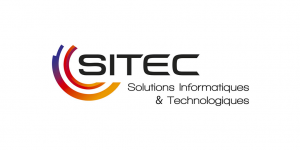
Kerlink & Sitec
SmartCity is not made exclusively for big cities as Cazzano can prove successfully prove it.
Abstract : “Smart cities are beginning to blossom all around the world and are imagined to be designed for metropolises. Some initiatives are however being deployed notably in France, where some village have already set smart networks solutions. It is the case of Cozzano, in France’s Southern Island of Corsica. This 300-person village has in its DNA to be at the top of the energetical performance innovation: over decades, Cozzano installed a biomass boiler and a hydrolectric powerplan in the target of producing more electricity than needed by the village’s consumption.”
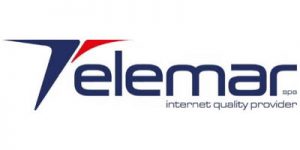
Kerlink & Telemar
Smart city solution at work for Piovene Rocchette, Italy
Abstract :“Piovene Rocchette, an Italian town of about 8,000 people at the foot of the Vicentine Prealps, needed to monitor environmental conditions in its numerous public buildings. The need was especially strong in winter, when maintaining comfortable temperatures and managing energy consumption inside buildings are essential. As in most buildings around the world, temperature management typically was entrusted to simple room thermostats, which were not up to the performance expected by a smart city”



